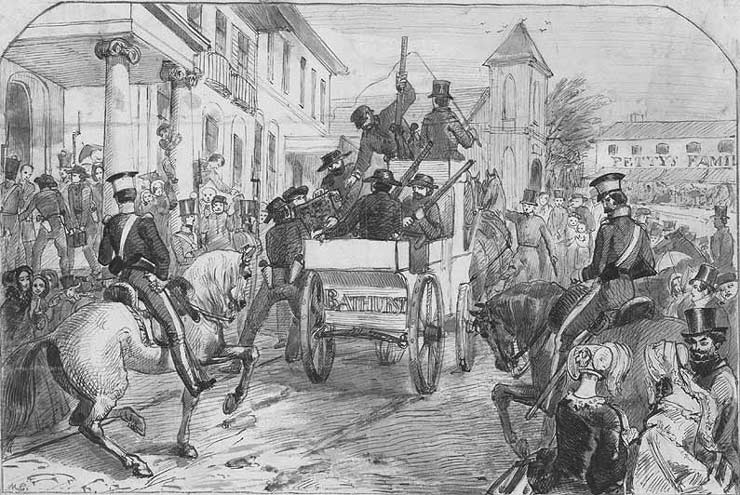 Government escort and mail at the Treasury, Sydney, 1851
Government escort and mail at the Treasury, Sydney, 1851
TLF ID R3163
This is a black-and-white pen-and-wash drawing of the rear of a mail coach outside the New South Wales Treasury in Sydney in 1851. Two uniformed police with rifles sit at the back of the coach while others unload boxes of gold to take into the Treasury. Two mounted police flank the coach as men, women and children in mid-Victorian dress watch from the sides of the street. The driver sits high at the front of the coach; another policeman steadies the pair of horses in front.
